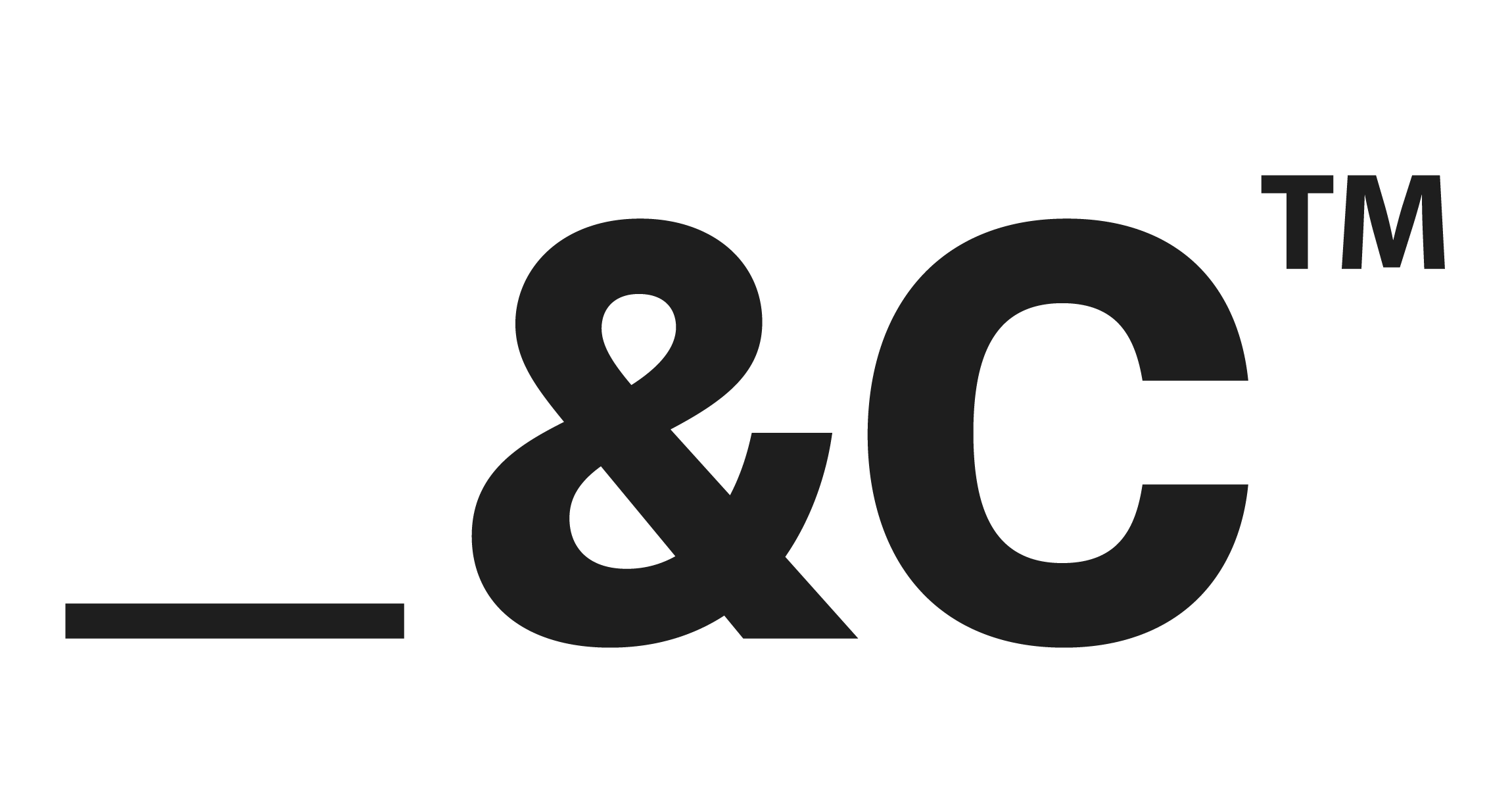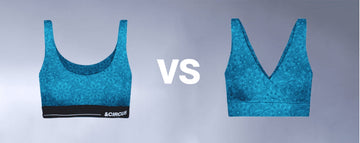Quick Listen:
In a crowded Delhi department store, a display of mannequins stands out not for their chiseled perfection, but for their authenticity. They're diverse in shape, size, and shade, adorned in cotton bras and breathable panties that prioritize comfort over fantasy. This scene, mirrored in cities from Mumbai to Chennai, signals a seismic shift in India's underwear industry. No longer just about utility, innerwear is becoming a canvas for confidence, inclusivity, and a bold redefinition of beauty rooted in Indian realities.
Uncomfortable underwear shouldn't steal your confidence. At Andcircus, we craft ultra-soft, sustainable Lenzing Modal Micro® innerwear for every body, XS to 5XL. From briefs to bras, our custom packs fit you perfectly. Shop risk-free with our 100% satisfaction guarantee and embrace comfort that includes everyone. #LoveEveryBody. Shop Now!
India's Fashion Hubs Redefine Comfort, Confidence, and Inclusivity
India's innerwear market, valued at ₹40,000 crore per FICCI-Wazir Advisors, is surging, propelled by women and young consumers who view underwear as a statement of identity. Once a hushed purchase, lingerie now commands attention in urban centers like Bengaluru and Kolkata, where Gen Z and millennials demand brands that reflect their values. A 2024 NIFT-Kolkata survey found that 67% of women in West Bengal and Tamil Nadu favor campaigns showcasing real-body imagery, signaling a cultural pivot toward authenticity over idealized standards.
The global women's underwear market thrives on its diversity, offering products from everyday essentials like bras and panties to specialized options like maternity and sports undergarments. These cater to varied consumer needs, balancing aesthetics, functionality, and comfort across socio-economic groups. In India, this global vibrancy takes on a local flavor, with brands leveraging studies like CSIR-NISTI's 2023 Delhi report to create sizing tailored to Indian body types, moving away from restrictive Western standards.
A Movement Rooted in Indian Soil
Body positivity, though a global concept, has found a distinctly Indian voice. Social media campaigns led by influencers in Maharashtra and Karnataka have transformed lingerie marketing into a celebration of diversity. Mumbai startups feature models of all sizes, while Bengaluru's direct-to-consumer brands craft campaigns that resonate with urban youth. In Kerala, retail cooperatives emphasize comfort over aesthetics, aligning with the state's progressive ethos. Kolkata's brands, meanwhile, blend local artistry with narratives of self-assurance, creating ads that feel like stories.
This shift is grounded in data. The NIFT-Kolkata survey highlights how women in Tamil Nadu and West Bengal are pushing for inclusive imagery, compelling brands to rethink their strategies. Across India, localized sizing based on Indian body data is replacing one-size-fits-all approaches. The result is innerwear that feels personal, whether you're shopping in a Hyderabad mall or a small-town Gujarat boutique. This focus on fit and representation is redefining what it means to feel confident in one's skin.
Regional Forces Driving Change
Urban powerhouses like Maharashtra and Delhi are at the forefront. Mumbai's direct-to-consumer lingerie brands, such as Zivame, offer sizes from XS to 5XL, catering to a broad clientele. In Delhi, mall retailers are adopting inclusive mannequins, as noted in a 2024 Retailers Association of India report, reflecting real body diversity. These cities lead the charge, with e-commerce platforms amplifying access to inclusive designs for millions.
In the south, Karnataka and Tamil Nadu are innovation hubs. Tiruppur's textile units and Bengaluru's research centers are pioneering breathable cotton blends and seam-free technology, ideal for India's humid climate. These regions prioritize sustainability, crafting fabrics that serve both the wearer and the planet. In Telangana and Gujarat, tier-2 cities like Hyderabad and Ahmedabad are witnessing a rise in first-time lingerie buyers, driven by digital education campaigns. A 2024 Telangana State Textile Board survey notes growing acceptance of comfort-focused innerwear among working women, signaling evolving priorities.
Cultural nuances shape markets in Haryana, Kerala, and West Bengal. Kerala's cooperatives champion body comfort, while Kolkata's brands weave social storytelling into their campaigns. Haryana, however, faces hurdles semi-urban areas still grapple with stigma around open lingerie marketing, slowing the adoption of inclusive lines. These regional differences highlight the complexity of India's innerwear market, where progress is both dynamic and uneven.
Brands Setting the Standard
Leading brands are turning this vision into reality. Bengaluru-based Zivame's “Love Yourself” campaign celebrates diverse body types, striking a chord with urban shoppers. In Noida, Clovia collaborates with Indian textile mills to design better-fitting underwear, informed by localized fit data. Delhi's AndCircus stands out for its sustainable, gender-inclusive designs, catering to all body shapes. These efforts are bolstered by initiatives like the Fashion Design Council of India's 2024 push for inclusive runway shows, which spotlight diversity in intimate apparel.
Challenges remain. Sizing standardization is a persistent issue despite BIS guidelines (IS 15853, updated 2023), India lacks a unified size chart. Price sensitivity in states like Uttar Pradesh and Telangana limits access to premium inclusive lines. Supply chain bottlenecks in Tamil Nadu's textile clusters also hinder progress, with calls for enhanced female-centric research and regional fabric availability to bridge the gap.
Seizing Opportunities for Growth
The outlook is promising. Wazir Advisors forecasts a 12–14% CAGR for India's women's innerwear market by 2025, fueled by inclusive branding and influencer advocacy. Tech hubs in Bengaluru and Hyderabad are deploying digital try-on tools and AI-driven size recommendations, making shopping seamless. Gujarat's Textile Policy 2025 is boosting the export potential of Made-in-India inclusive lingerie, while Kerala and Tamil Nadu brands adopt bamboo-based fabrics and ethical dyeing, aligning with global sustainability demands.
Looking ahead, experts from NIFT-Chennai and FDCI Delhi predict that body-neutral and unisex underwear lines will dominate by 2027. Gen Z's demand for authenticity is driving transparent campaigns and co-creation models, where consumers help shape designs. Programs like Skill India – Apparel 2025 are training designers in inclusive fit, ensuring the industry evolves with its audience. As a Bengaluru-based textile research analyst noted in 2025, “Body positivity is no longer a campaign it's the foundation of comfort commerce.”
A New Standard for Beauty
From Mumbai's vibrant streets to Tiruppur's humming looms, India's underwear industry is crafting a new narrative. Body positivity has moved beyond rhetoric to become a cornerstone of design and marketing. It's the woman in Kolkata choosing a bra that fits her life, not an ad's fantasy. It's the designer in Bengaluru sketching for every body, not an unattainable ideal. As India's fashion hubs embrace inclusivity, they're not just selling underwear they're championing confidence, comfort, and a vision of beauty that resonates with millions. This transformation, rooted in empathy and innovation, is positioning India as a global leader in intimate apparel, proving that every body is the right body.
Frequently Asked Questions
How is body positivity changing India's underwear industry?
Body positivity is transforming India's ₹40,000 crore innerwear market by shifting focus from idealized beauty standards to authentic representation and comfort. Brands are now featuring diverse body types in campaigns, creating localized sizing based on Indian body data, and prioritizing breathable, comfortable fabrics over restrictive designs. This movement is particularly strong in urban centers like Mumbai, Bengaluru, and Kolkata, where 67% of women prefer campaigns showcasing real-body imagery according to a 2024 NIFT-Kolkata survey.
Which Indian brands are leading the inclusive lingerie movement?
Bengaluru-based Zivame leads with its "Love Yourself" campaign and size range from XS to 5XL, while Clovia in Noida collaborates with Indian textile mills for better-fitting designs using localized fit data. Delhi's AndCircus stands out for sustainable, gender-inclusive underwear catering to all body shapes. These brands are supported by initiatives like the Fashion Design Council of India's 2024 push for inclusive runway shows in intimate apparel.
What challenges does India's inclusive underwear market face despite its growth?
Despite a forecasted 12-14% CAGR by 2025, the industry faces three major challenges: lack of unified sizing standards even with updated BIS guidelines (IS 15853), price sensitivity in states like Uttar Pradesh and Telangana that limits access to premium inclusive lines, and supply chain bottlenecks in textile clusters. Additionally, semi-urban areas in states like Haryana still struggle with stigma around open lingerie marketing, creating uneven adoption of body-positive products across regions.
Disclaimer: The above helpful resources content contains personal opinions and experiences. The information provided is for general knowledge and does not constitute professional advice.
You may also be interested in: Why Body-Positive Brands Are Reshaping Innerwear Trends
Uncomfortable underwear shouldn't steal your confidence. At Andcircus, we craft ultra-soft, sustainable Lenzing Micro Modal innerwear for every body, XS to 5XL. From briefs to bras, our custom packs fit you perfectly. Shop risk-free with our 100% satisfaction guarantee and embrace comfort that includes everyone. #LoveEveryBody. Shop Now!






































